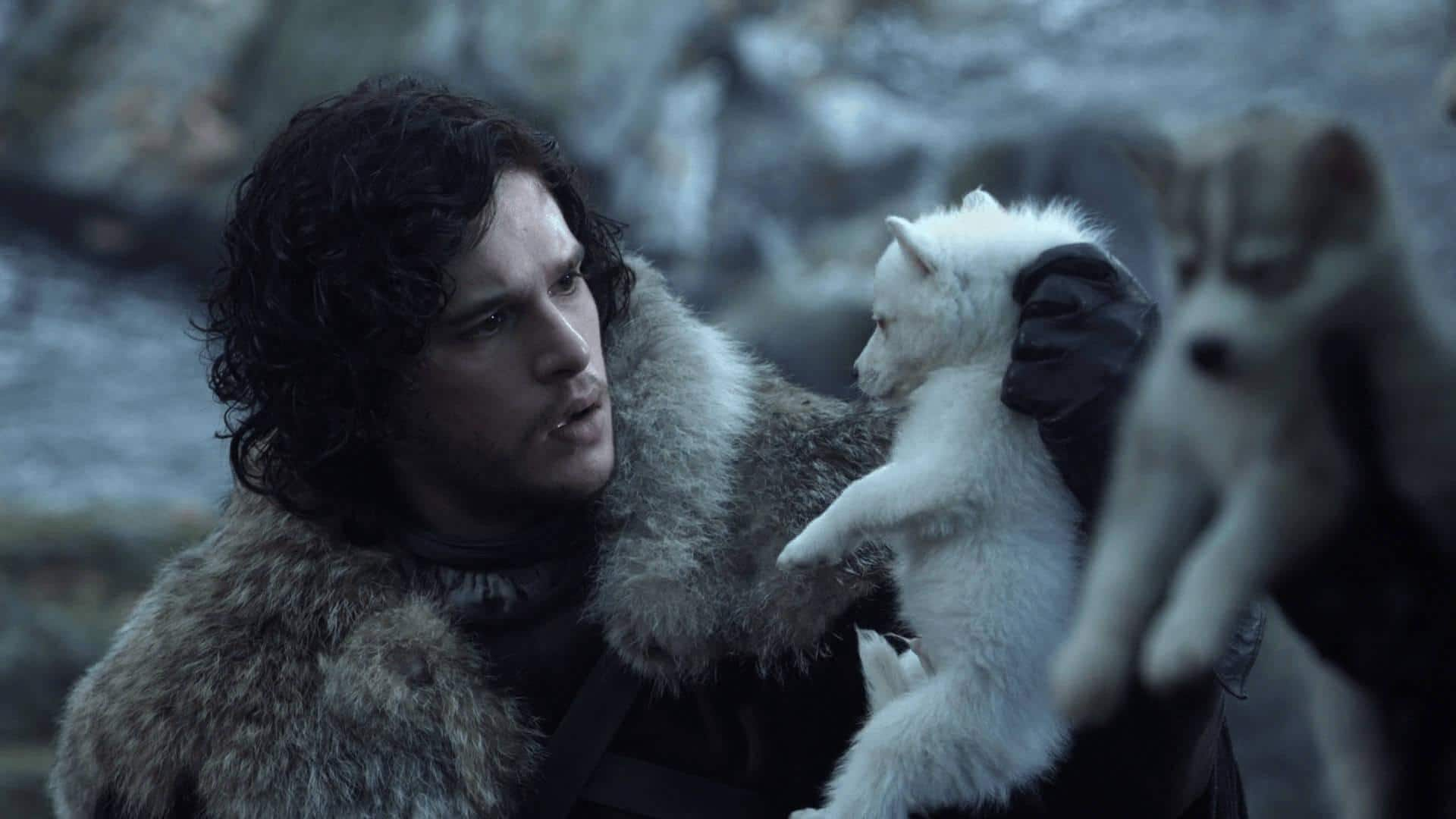
Scientists bring alive extinct dire wolf, popularized on GOT
What's the story
In a groundbreaking achievement, Texas-based genetic engineering company Colossal Biosciences has brought the extinct dire wolf back to life.
The firm announced on Monday that it has created three dire wolf pups using advanced genetic editing and cloning techniques in what is being hailed as the "world's first de-extinction."
Larger than gray wolves (their closest living relatives) with a slightly wider head, denser fur, and a stronger jaw, the dire wolves went extinct more than 10,000 years ago.
Genetic engineering
DNA played a crucial role in this project
The dire wolf, scientifically known as Aenocyon dirus, inspired the fearsome canine in HBO's Game of Thrones.
Since 2021, Colossal Biosciences has been working toward reviving other extinct species like the mammoth and Tasmanian tiger.
"This massive milestone is the first of many coming examples demonstrating that our end-to-end de-extinction technology stack works," said Colossal Co-founder and CEO Ben Lamm.
He added they used DNA from a 13,000-year-old tooth and a 72,000-year-old skull to create healthy dire wolf puppies.
Genome editing
Colossal's team used ancient DNA to create hybrid genome
Colossal's team utilized ancient DNA from two dire wolf fossils to create high-quality Aenocyon dirus genomes.
They compared these genomes with those of living canids like wolves, jackals, and foxes to find genetic variants unique to dire wolves.
The company altered gray wolf cells using this information, making 20 edits in 14 genes before cloning the most promising cell lines and transferring them into donor eggs.
Birth details
The dire wolf pups were born through interspecies gestation
The first de-extinct species was born via interspecies gestation. Later, three pregnancies led to the birth of two male dire wolf pups on October 1, 2024, and a female pup on January 30, 2025.
Colossal confirmed to CNN that they used large mixed-breed hounds as surrogates for the process.
The company hopes to use the same technologies that revived the dire wolf to aid endangered animals in the future.
Twitter Post
The dire wolf pups
NEW: Scientists have brought back dire wolves using ancient DNA, with the first born on October 1, 2024, over 10,000 years after their extinction
— Unlimited L's (@unlimited_ls) April 7, 2025
The genome was reconstructed by Colossal from ancient DNA found in fossils
The fossils date back 11,500 and 72,000 years
Colossal… pic.twitter.com/QmG9b3ZF5N
Security measures
Dire wolf pups are being kept in a secure location
The dire pups currently live on 2,000-acre site in an undisclosed location, protected by 10-foot-tall "zoo-grade" fencing.
They are constantly monitored by security personnel, drones, and live camera feeds.
Though the pups visually resemble young dire wolves, "what they will probably never learn is the finishing move of how to kill a giant elk or a big deer."
This is because they will not have opportunities to learn from dire wolf parents, Colossal's chief animal care expert Matt James said.